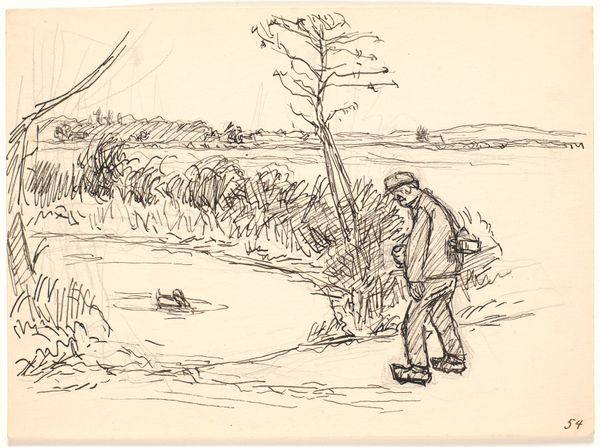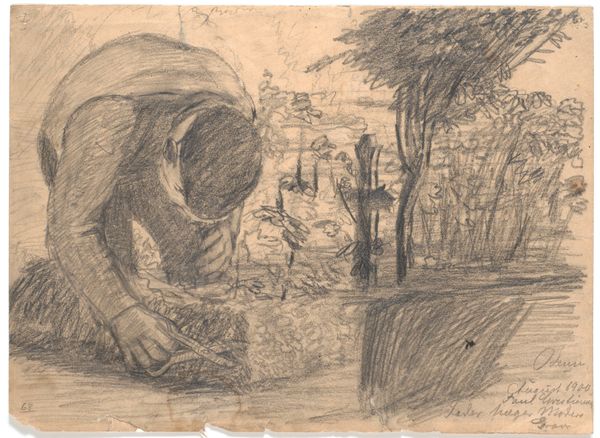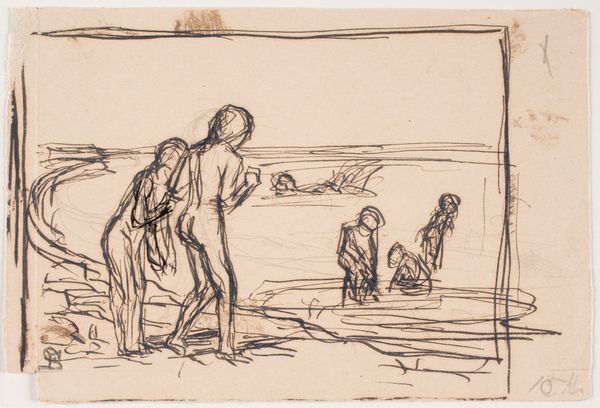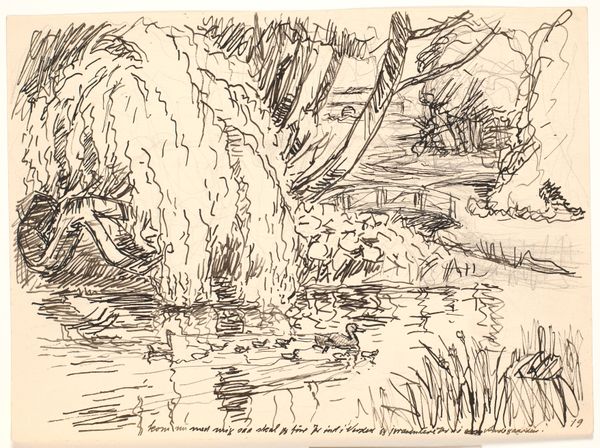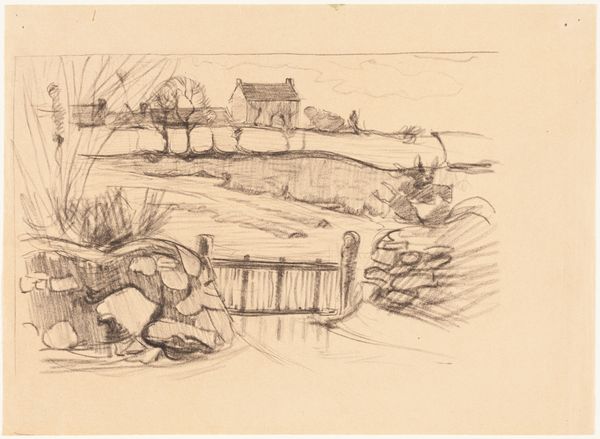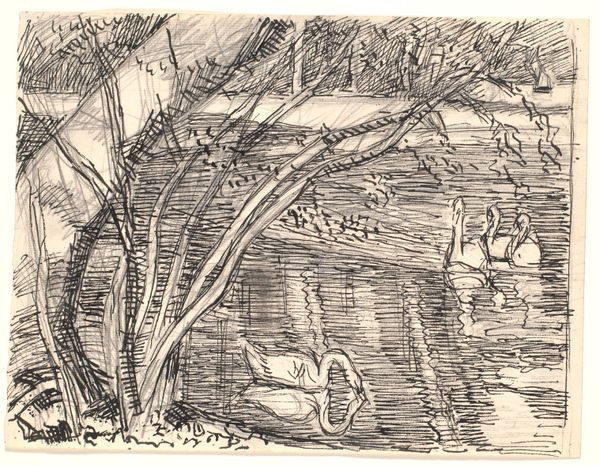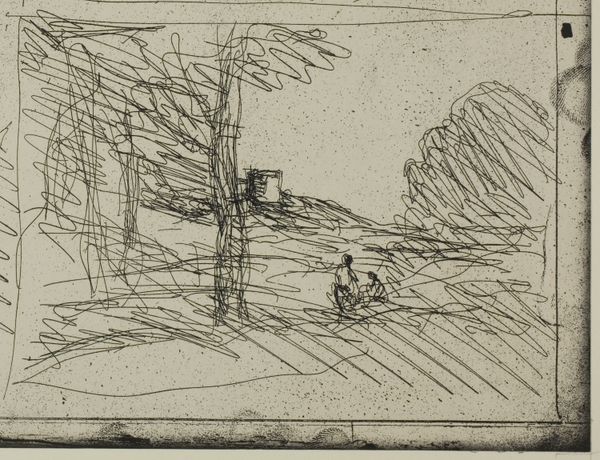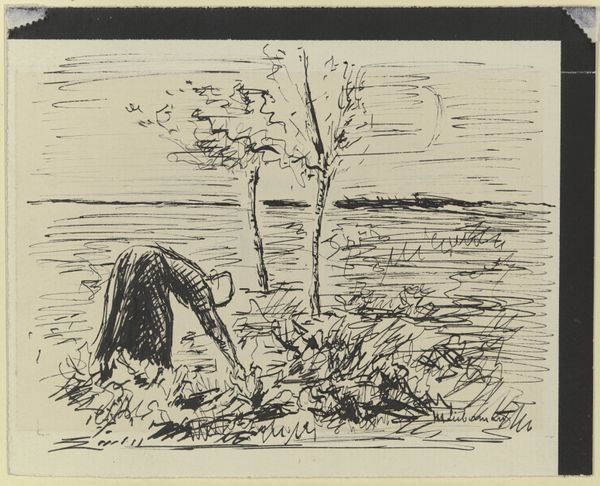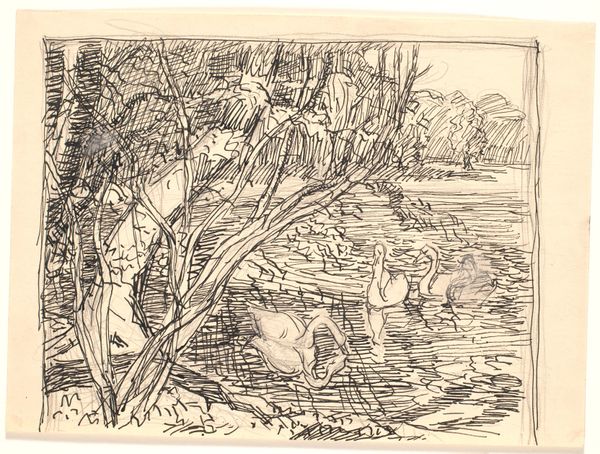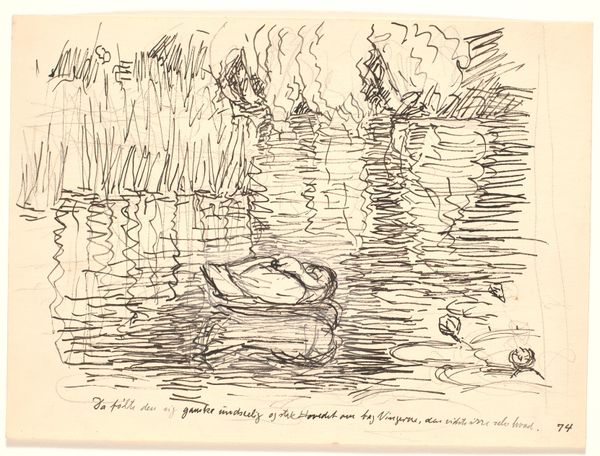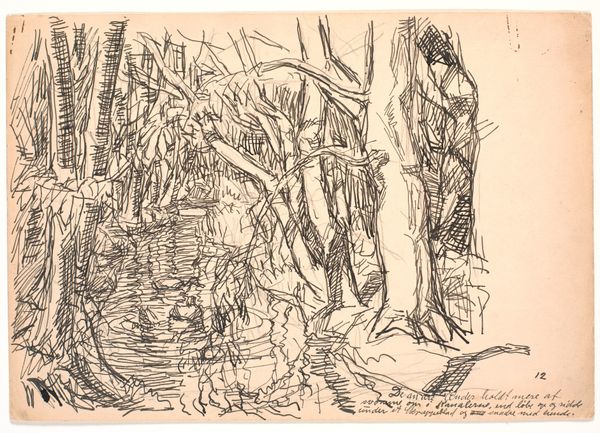
drawing, ink, pencil
#
drawing
#
pen illustration
#
pen sketch
#
landscape
#
figuration
#
ink line art
#
personal sketchbook
#
linework heavy
#
ink
#
ink drawing experimentation
#
pen-ink sketch
#
pencil
#
thin linework
#
pen work
#
sketchbook drawing
#
realism
Dimensions: 246 mm (height) x 338 mm (width) (bladmaal)
Curator: So stark, so fleeting. It feels like a memory just barely held onto. Editor: Yes, "The Farmer on the Ice," a pen and ink drawing by Fritz Syberg from 1928. It's an interesting piece to consider from a materialist lens. Look at how he utilizes these simple materials—pen, ink, paper—to capture this rural scene. Curator: Absolutely. The hurried linework… it gives the sense that Syberg might have captured this on the spot, perhaps on a freezing day himself! The ink bleeds slightly in places, doesn’t it? Almost like the cold seeping into the paper. I see vulnerability. Editor: Indeed, the technique emphasizes the conditions of production, as it were. And let's not forget the subject—the farmer on the ice. We see someone actively working the land, even in the depths of winter. What was the nature of this person's labour? Are they fixing equipment for the ice or drawing water? Curator: You’re right. It’s not idealized; there’s no romanticizing here. The bent posture of the figure suggests physical exertion. It is honest, which makes it compelling. I imagine him there, a dark shape against the stark landscape… a dance of solitude and struggle. Editor: Syberg's choice to use ink and pen elevates a very practical drawing format; we're not looking at 'high art' painting. Think about the paper too; probably fairly ordinary, not a costly surface at all. And consider the availability of these resources during that time period, in that rural setting. All are relevant. Curator: He manages to find a fragile beauty in that everyday reality. The quick lines suggest a world constantly in motion, a fleeting moment in time. Despite the simplicity, there’s a quiet profundity. I appreciate his approach to art making in general. A wonderful example of something from almost nothing. Editor: Agreed. By examining the context, materiality, and production process of a piece like "The Farmer on the Ice," we get beyond a simple aesthetic assessment. We start to understand the intersection of artistic intention and social realities. Curator: It gives pause, doesn't it? The piece makes me consider the quiet resilience in those stark rural moments. Syberg makes you feel that chill, the bite of the wind… I will think differently the next time I hear the scrape of skates. Editor: Indeed. It shows how art-making is inextricably tied to its own time, and prompts deeper reflection on labor and material conditions beyond the artwork itself.
Comments
No comments
Be the first to comment and join the conversation on the ultimate creative platform.
